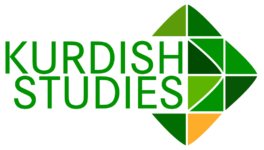Water Hyacinth Transformation of Wet Garbage in Households into Environmentally-Friendly Products
King Mongkut’s Institute of Technology Ladkrabang
Abstract
The research has the following objectives: 1) To develop the transformation of water hyacinths together with wet waste, 2) to design environmentally friendly products, and 3) to assess satisfaction in terms of using environmentally friendly products. The research scope is as follows: The population comprised 1,124 people who chose to buy plants at Chatuchak Market, located in Bangkok, Thailand, while the sample group comprised 150 consumers who chose to buy products in the area for selling plants at Chatuchak Weekend Market in Bangkok, Thailand, (simple random sampling). In addition, the research tool was a structured questionnaire on satisfaction with newly designed products using a 5-level questionnaire scale (Cronbach’s Alpha = 0.815, 0.839).In this case, it was found that the effective ingredient formula was 42.50% water hyacinth, 42.50% artificial soil from wet garbage, and 15% ash husk, which provided nutrients that were suitable for plants. In the same way, the creation of a prototype for a new organic pot product was carried out. What is more, it was found that 7 variables affected the emergence of satisfaction among consumers when the prototype was evaluated with consumers, including 1) Environmental Awareness, 2) Product image, 3) Product story, 4) Standard products, 5) Responsibility, 6) Communication, and 7) Price level. All 7 variables will work together to affect the level of consumer satisfaction with new products produced from water hyacinth combined with wet waste. Thus, it is capable of checking for factors affecting consumer decision-making to purchase environmentally friendly products arising from 4 elements: Feeling element, Product element, Awareness element, and Price element. In this case, the consistency index was at the level X2= 33.185, df = 27, relative X2= 1.229, p =.191, RMSEA =.039, RMR = .025, GFI = .965, AGFI = .900, NFI = .953, TLI = .977.When consumer satisfaction was evaluated, it appeared that the influence of all 3 factors, arranged from highest to lowest, included the product appearance factor (.306), the product price factor (.270), and the feeling factor (.187). In summary, the prediction equation is and , and consumers have a demand for environmentally friendly product characteristics, which can be demonstrated as follows: 1) The product has an environmentally friendly appearance; 2) The product has a price level that is consistent with the utility that consumers want; 3) The product demonstrates a production process that has a low impact on the environment. If these three new characteristics are applied, the chance of success in responding to consumers will be at a level of 35.1%.
